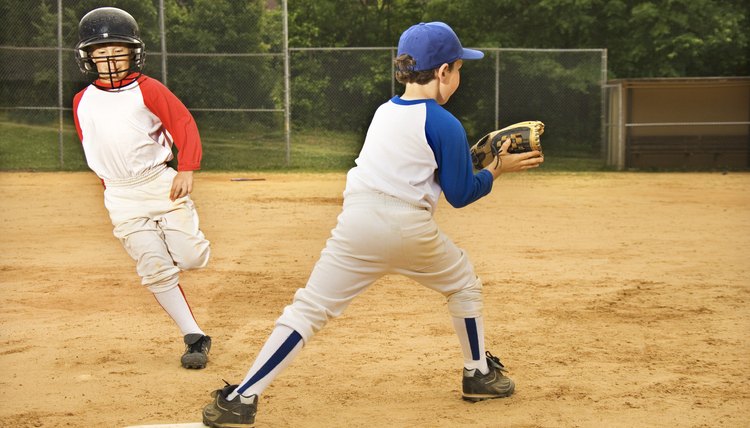Baseball Rules Regarding Sliding into First Base

There's rarely a need for a player charging down the first base line to slide into the bag. Runners can run over the base, and sliding can slow them down and expose them to injury. However, there are certain situations where it may be advantageous, such as when a bad throw pulls the first baseman off the base. To keep things safe and avoid reckless play, baseball has some rules about sliding into first.
Stay in the Base Paths
Base path rules apply whether a player is sliding or not. Runners maintain about three feet of leeway on either side of their path. Usually, runners dive into first as opposed to sliding feet first. A head-first dive may give a runner greater body control, but he's still subject to the same rules as if there had been no slide. Runners who don't follow the rules will get called out.
Sliding Through the Base
First is the only base which a runner can run through, as opposed to stopping at the base. However after moving through the base, the runner can't attempt a move toward second base unless he thinks he will make it safely, for instance, on an overthrow. If he does attempt to run to second, he's a live runner and may be tagged out.
Diving Back
It's not uncommon at all to see players diving back into first to avoid pick-off attempts. Sliding or diving, the same rules apply; he can't slide out of the base path, and it's interference if he makes contact with the first baseman. If an umpire feels the runner has done anything to interfere with the fielder, the runner will be called out.
Avoiding the Fielder
A runner can't start his slide or dive too late in an attempt to injure the first baseman. A runner diving late into the legs of a fielder presents a dangerous scenario for both parties involved. If the umpire feels the runner purposely tried to run into the fielder, he can call interference and that means the runner is out.
References
Writer Bio
Rob Costello is a journalism student at the George Washington University. He is a past member of the Division 1 baseball team at GW, and has been writing about subjects surrounding the MLB and other major sports for the past five years. Costello is an expert on pitching mechanics, baseball-specific exercises and the culture of baseball in general.
